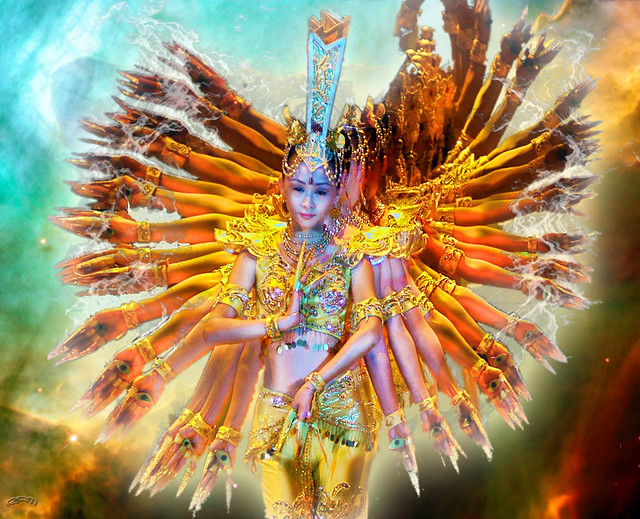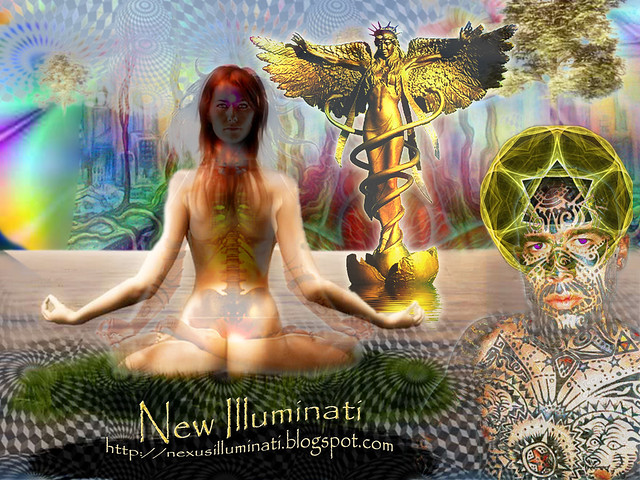|
Scholar, philosopher and eminent Buddhist monk, Professor Samdhong
Rinpoche is Chairman of the Cabinet in the Central Tibetan Administration. In
2006, he gave a talk about the vision and legacy of His Holiness the Dalai Lama.
Samdhong Rinpoche highlighted
five main challenges
facing the world in the twenty-first century:
• indiscriminate population
increase
• social and economic inequality
• violence
• environmental degradation
• and religious intolerance
In this brief series of
excerpts, he offers a personal insight into the contribution that His
Holiness the Dalai Lama has made in trying to address these challenges.
❖
How can we meet these five
challenges and overcome them? In the Dalai Lama’s analysis of the situation, what are the root
causes of all these problems? He goes back to the Buddhist tradition for the
answer: ignorance, greed and hatred. These three mindsets are the negative
emotions that form the root cause of every one of our problems.
All the challenges we have
mentioned, which are caused by the exploitation of greed or hatred through
ignorance, can be countered by love, compassion and the recognition of our
own responsibility. In Tibetan we call these three jampa, nyingjé and
lhaksam, respectively. The word lhaksam means 'to take responsibility', which
the fourteenth Dalai Lama has articulated in the form of a very modern
aspiration: universal responsibility. All of these challenges can be met and
countered if we can as individuals develop and practise a sense of universal
responsibility, a feeling of responsibility for everyone. Of course, a person
who aspires to liberation for himself or herself alone will also feel some
sense of responsibility, but it will not be a universal one.
 As
was explained by the Buddha, the actions of every single individual have a
relationship with, and effect on, the entire universe, whether it be directly
or indirectly As
was explained by the Buddha, the actions of every single individual have a
relationship with, and effect on, the entire universe, whether it be directly
or indirectly
Universal
responsibility implies feeling a connectedness with the entire universe, with
all sentient beings, and with all the living beings on this earth—as well as
a concern and a responsibility for them all. For example, if I commit an
unwholesome action of some kind, its effects will not be limited to the
immediate subject or object. It will have a universal implication. This is a
phenomenon that scientists also recognize today. A pin dropped here in France
has repercussions a long way away; even light years from here it can have
some kind of effect. This is a reality.
As was explained by the Buddha,
the actions of every single individual have a relationship with, and effect
on, the entire universe, whether it be directly or indirectly. It is an
understanding of this universal interconnectedness that underlies what is
meant by lhaksam. This is what gives universal responsibility the elevated
quality it has, and keeps it from ever being ordinary in its outlook. It is only
the development of this sense of universal responsibility that can allow us
to tackle our five major challenges, and many others as well.
I personally believe that this
unique way of expressing the meaning of lhaksam as universal responsibility
is really one of the present Dalai Lama’s great contributions to the world,
and it is up to us to continue this legacy for the benefit of people in times
to come.

Secular Ethics
The Dalai Lama speaks not only
about universal responsibility but also about secular ethics. Of course, ethical
teaching belonging to the various religious traditions are still very much in
existence, and each one of them is extremely important. Whether we are able
to abide by these ethical systems or practise them in our lives or not, each
religion teaches a very high standard of morality and ethics.
On the other hand, there are
many people in this world who do not belong to any spiritual tradition, and
who do not have faith in or reverence for any religious teaching. They
represent a huge proportion of the earth’s population. They, too, need some
kind of morality, a code of conduct and an understanding of ethics. Many
aspects of ethical behaviour are not necessarily confined to religious
teachings or tradition, they apply to non-believers and to the whole of
society. It is often said these days that 'man is a social animal'. We have
to live together in society. Whether you are a believer or a non-believer,
you still need a certain code of behaviour, so as not to forsake your
responsibility towards the rest of the people in society, with whom you are
constantly dealing.
When we use the word 'secular'
here in relation to secular ethics, we are referring to all those who do not
believe in a religion, but who are willing to lead the life of a civilized
person. Civilized human beings must adhere to certain ethical principles. I
believe that those of us who consider ourselves religious practitioners have
a responsibility: to inspire an interest in secular ethics among those who
don’t have faith in a religion, but who are educated and civilized and will
respect these kinds of moral values.
This vision of secular ethics
can be implemented in many different dimensions: as ethics for business
people, ethics for politicians, ethics for professionals, and ethics for
people from any walk of life. Without even touching on religious teachings or
scriptures, we can talk about ethical values for everyone, so the concept of
universal responsibility and the concept of secular ethics are equally of
tremendous importance for us all.
The Scientific and
Spiritual Dialogue
Then there is yet another field
in which the present Dalai Lama has made a decisive contribution. That is the encounter
between science and spirituality, and the ongoing
dialogue between scientists and spiritual practitioners. Here we have an
interaction in which neither discipline interferes with the methods or laws
of the other, and where scientific knowledge and religion, scientists and
spiritual practitioners, are coming together to find a common ground in their
commitment to serve humanity.
Science and technology can be influenced
and supplemented by morality or spirituality, so that they move towards
greater constructiveness, and reduce their tendency to be used for
destruction. This highlights how important it is for scientists to engage in
dialogue with spiritual masters. I have known some leading scientists who
believe strongly in such an approach. The late David Bohm, for example, had
quite extensive dialogues with Jiddu Krishnamurti, in which I had the
opportunity to participate. I have also had separate discussions with Fritjof
Capra, an Indian scientist called Rajendra Priyadarshi, and several others.
These individuals believe that
scientific knowledge as a whole can be immensely benefited by exposure to
spiritual traditions, particularly Buddhist metaphysics and abhidharma. They
feel that this could then influence science and technology in a positive
direction, curbing their destructive use and inculcating a more spiritual
attitude among scientists and world leaders that could be beneficial to the
entire universe.
This collaboration between
spirituality and science is another important facet and outcome of His
Holiness’s vision. Not only has he had many encounters with scientists, but
he also seems very popular amongst them. He has inspired and initiated a
number of dialogues and conferences on mind and consciousness, which is where
science approaches very close to Buddhist concepts and contemplative
experience. Sometimes scientific knowledge, as it progresses, naturally seems
to reach a stage where science itself shades into spirituality.

Inner Disarmament: The
Path to Peace
The Dalai Lama’s argument is
that we are all human beings, and whether we belong to one of the religious traditions, whether
we are non-religious, whether we are involved in the interface of
spirituality and science—whatever our faith or persuasion, in
fact—individuals pursuing different paths can join together to help one
another and to help others.
 Inner
disarmament depends on the reduction of doubt and suspicion, and a deepening
in our ability to have confidence in one another Inner
disarmament depends on the reduction of doubt and suspicion, and a deepening
in our ability to have confidence in one another
His
long-term vision, perhaps his ultimate goal, is of a human society that lives
in peaceful co-existence, free from violence. The reduction of violence
remains always a prerequisite, because without eliminating force and violence
we can never achieve that peaceful society.
Reducing violence means cutting
military and armed forces, it means disarmament, it means creating zones of
peace, and it means designating sanctuaries for the preservation of the
environment. These are the kind of step-by-step programmes which will allow
us to build a peaceful human society, free from violence of any kind.
When the Dalai Lama talks about
the reduction of military forces and disarmament, he invariably speaks of
inner disarmament, because without inner disarmament, outer disarmament will
never be possible. This inner disarmament depends on the reduction of doubt
and suspicion, and a deepening in our ability to have confidence in one
another.
The Dalai Lama always advocates
the resolution of conflict through dialogue, negotiation and person-to-person
contact. This is the path that he follows, with complete sincerity, in the
process of resolving the Sino-Tibetan conflict and the issue of Tibet. The
'middle way approach' that he is pursuing so wholeheartedly embodies at its
core the principle of dialogue and the rejection of violence of any kind.
On many occasions the Dalai Lama
has said that the twenty-first century must be a century of dialogue, and a
century in which we seek to resolve conflict peacefully and by working
towards mutual agreement. To achieve his ultimate vision of a violence-free
society, in which we can all exist side by side with one another in peace, we
have to take the steps necessary to reduce friction between religious
traditions, to reduce social and economic disparity, to reduce violence and
destruction, arms and armed forces, and to encourage a genuine process of
dialogue aimed at resolving conflict and finding solutions for our enduring
problems.
Samdhong Rinpoche
Professor Samdhong Rinpoche was
born in 1939, in the Tibetan province of Kham. At the age of five, he was
recognized as the reincarnation of the fourth Samdhong Rinpoche, and he began
his monastic studies at the age of twelve at the great University of Drepung
in Tibet. In 1959, Rinpoche fled to India.
There, he was commissioned by
His Holiness the Dalai Lama to work in various capacities in Tibetan cultural
and educational institutions. In exile, he completed his studies, obtaining a
doctorate in divinity and doctorate in tantric studies. Appointed as director
of the Central Institute for Higher Tibetan Studies in Varanasi in 1988, he
remained there until 2001, playing an enormous part in the education of
generations of Tibetan scholars.
On 29 July, 2001, in a landslide
vote, Rinpoche became the first democratically elected Kalön Tripa, or Prime
Minister of the Tibetan Government-in-Exile.
An eminent and distinguished
scholar, teacher and philosopher, and fully ordained Buddhist monk, Rinpoche
is widely known as an ardent follower of Mahatma Gandhi, and life-long
campaigner for non-violence.
These extracts were taken from a talk given
by Professor Samdhong Rinpoche in the Lerab Ling temple, France, in July
2006.
First published in View, August 2008
The Dalai Lama's website |

 As
was explained by the Buddha, the actions of every single individual have a
relationship with, and effect on, the entire universe, whether it be directly
or indirectly
As
was explained by the Buddha, the actions of every single individual have a
relationship with, and effect on, the entire universe, whether it be directly
or indirectly


No comments:
Post a Comment
Add your perspective to the conscious collective